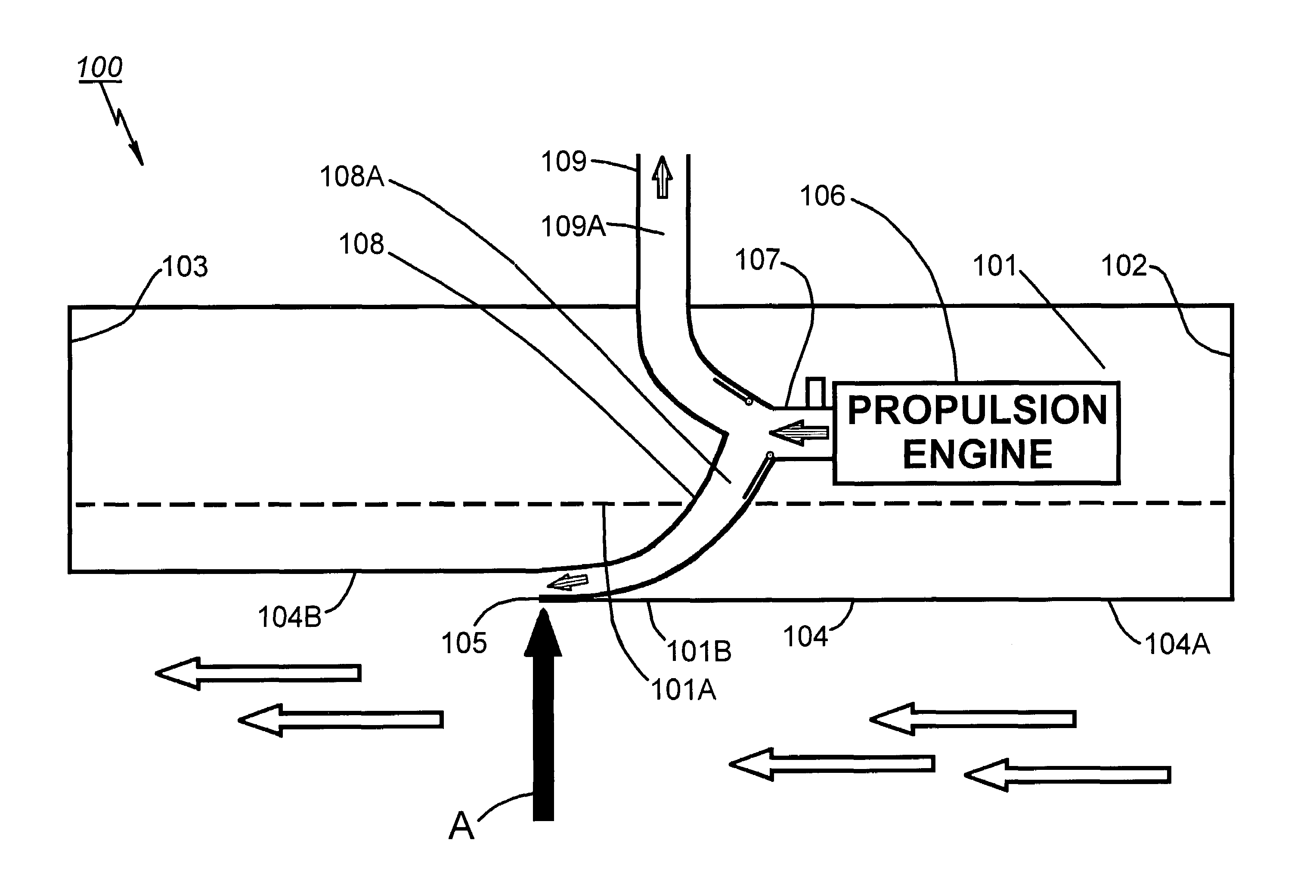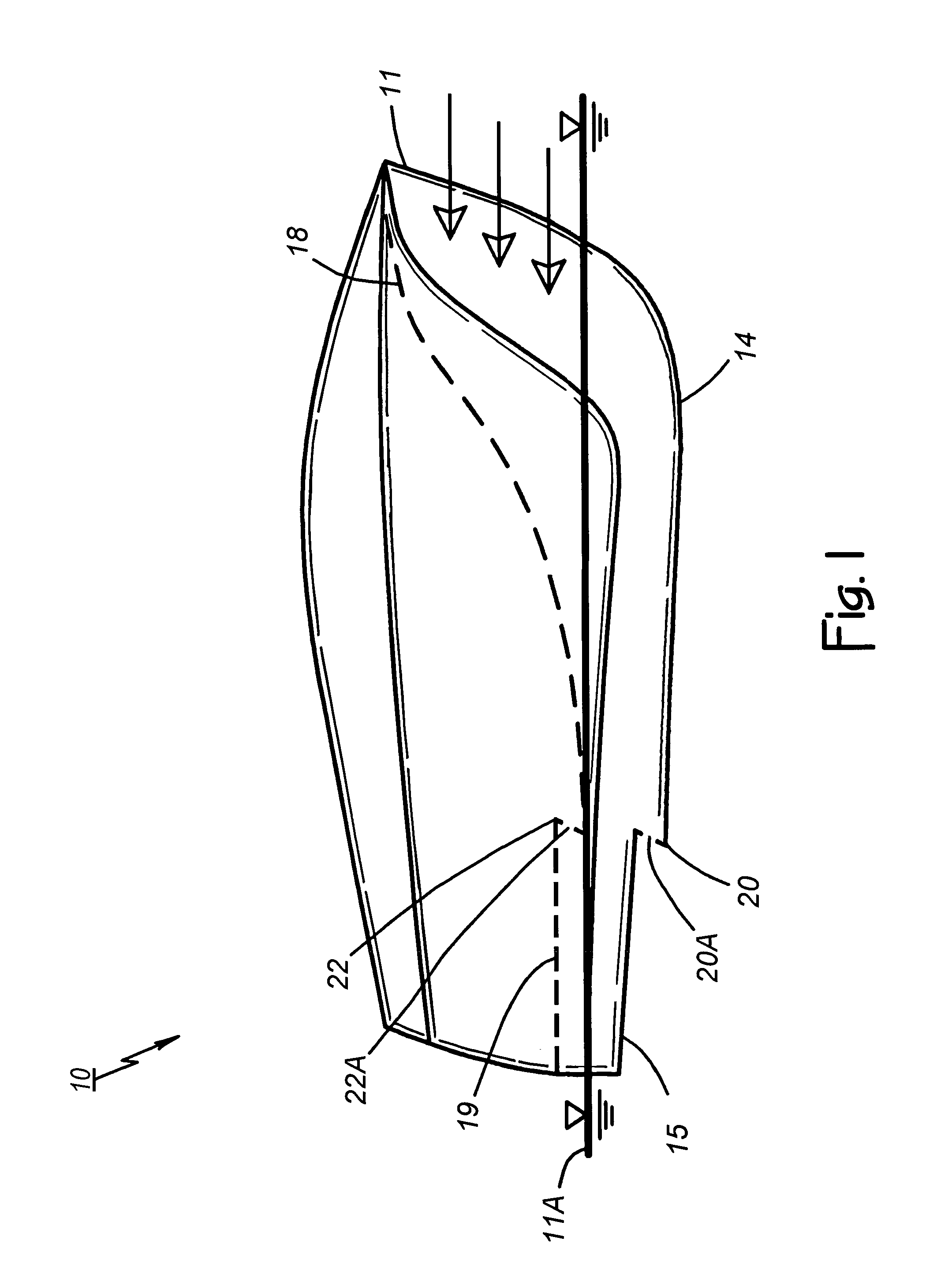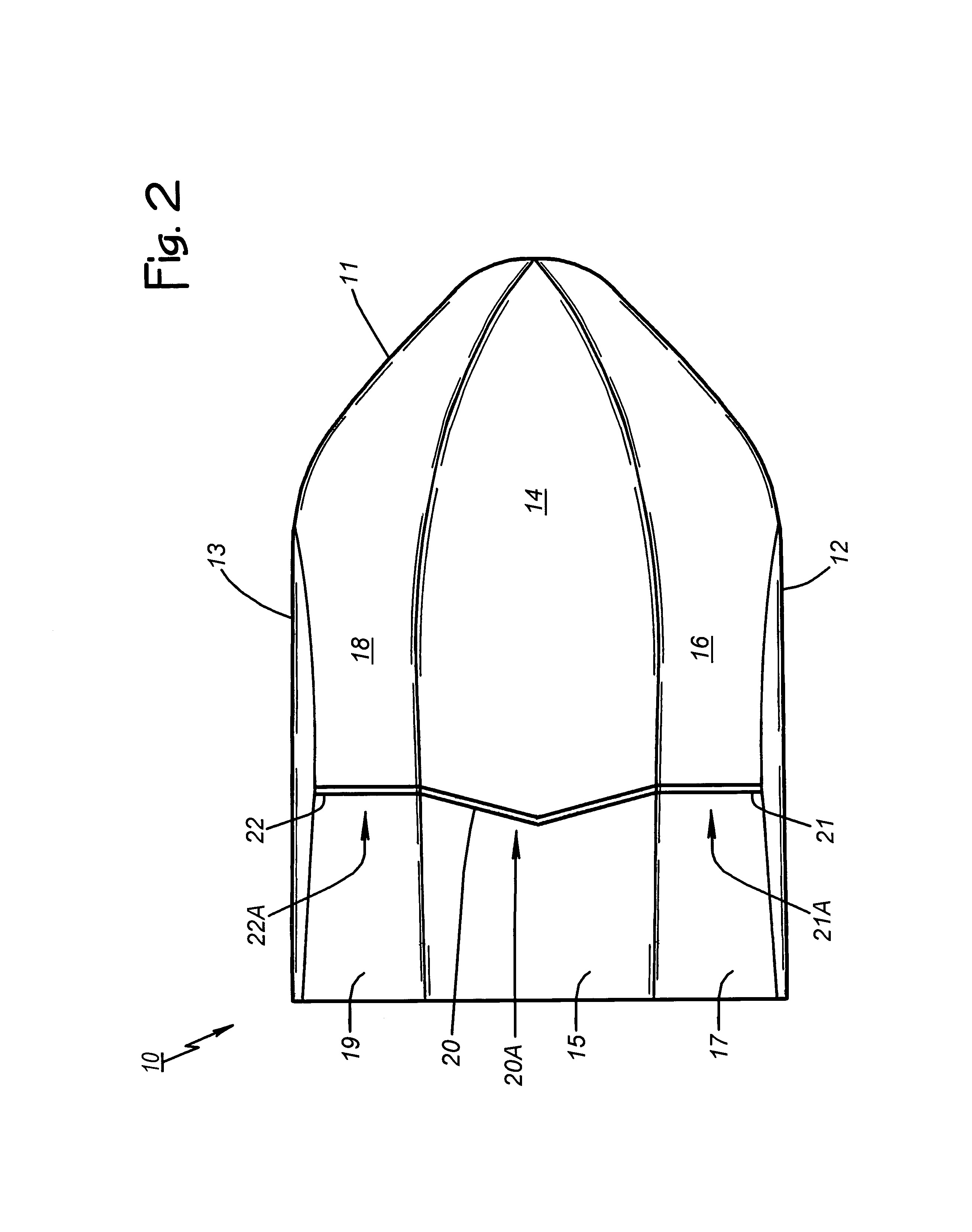Powered watercraft
a watercraft and power technology, applied in the field of powered watercraft, can solve the problems of affecting the operation of the watercraft, and aft vacuum, etc., to achieve the effect of reducing thermal signature, maintaining back pressure and heating, and improving efficiency
- Summary
- Abstract
- Description
- Claims
- Application Information
AI Technical Summary
Benefits of technology
Problems solved by technology
Method used
Image
Examples
Embodiment Construction
[0024]The description of the preferred embodiment begins with a Powered Watercraft With M-Shaped Hull section of this specification that restates some information presented in U.S. patent application Ser. No. 10 / 625,135 filed Jul. 23, 2003 (now U.S. Pat. No. 6,868,798). That background section describes watercraft having one or more planing surfaces and one or more steps in the planing surfaces at which exhaust is vented. Thereafter, information is presented in an Exhaust Proportioning System section that describes a dual exhaust system with means for controlling the proportions of exhaust vented at the steps in the planing surfaces and to atmosphere according to exhaust back pressure. A reader already familiar with the specification and FIGS. 1–9 of the above-identified patent application, may proceed directly to the additional information in the Exhaust Proportioning System section.
[0025]Powered Watercraft With M-Shaped Hull. FIGS. 1–4 of the drawings show various aspects of a pow...
PUM
 Login to View More
Login to View More Abstract
Description
Claims
Application Information
 Login to View More
Login to View More - R&D
- Intellectual Property
- Life Sciences
- Materials
- Tech Scout
- Unparalleled Data Quality
- Higher Quality Content
- 60% Fewer Hallucinations
Browse by: Latest US Patents, China's latest patents, Technical Efficacy Thesaurus, Application Domain, Technology Topic, Popular Technical Reports.
© 2025 PatSnap. All rights reserved.Legal|Privacy policy|Modern Slavery Act Transparency Statement|Sitemap|About US| Contact US: help@patsnap.com



